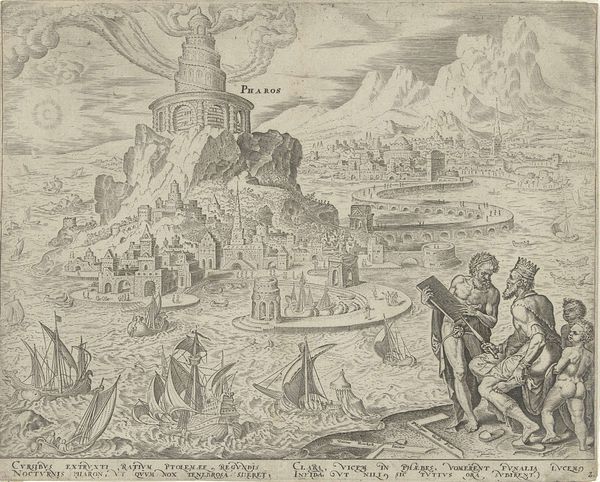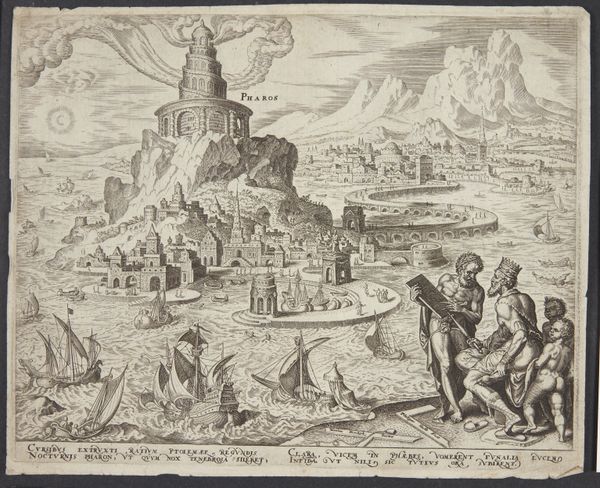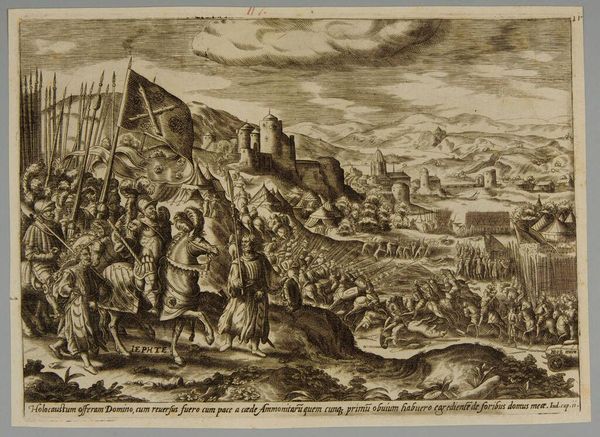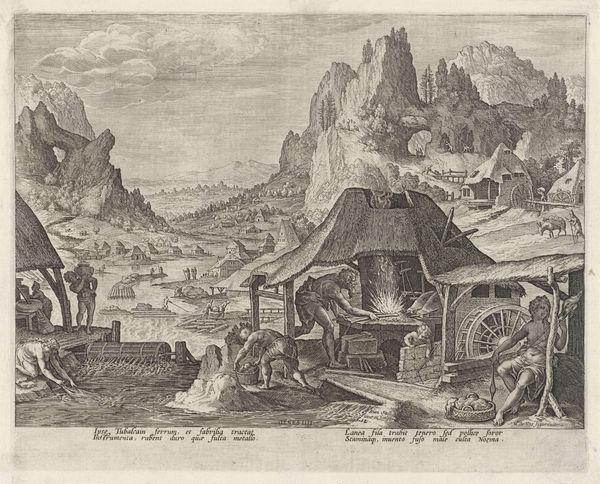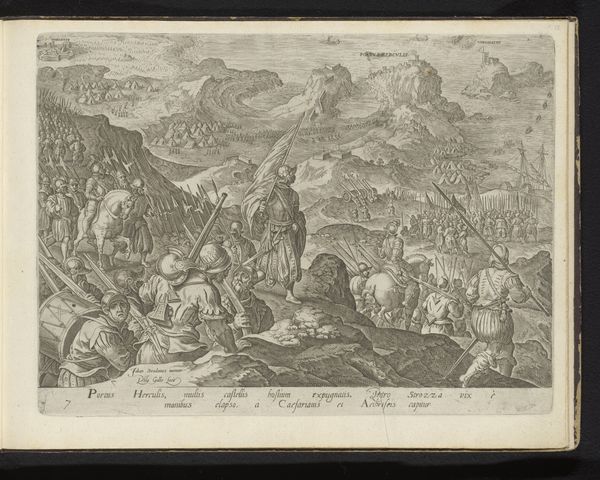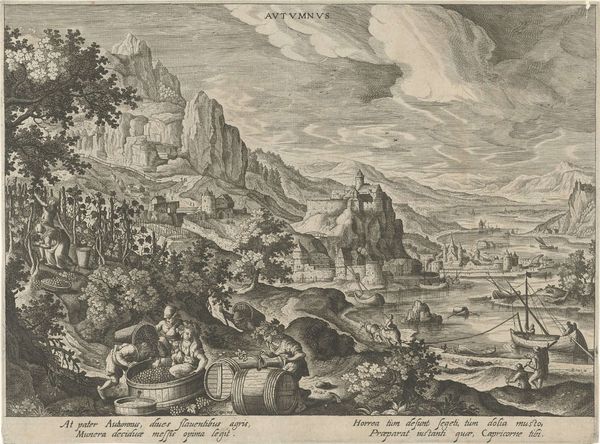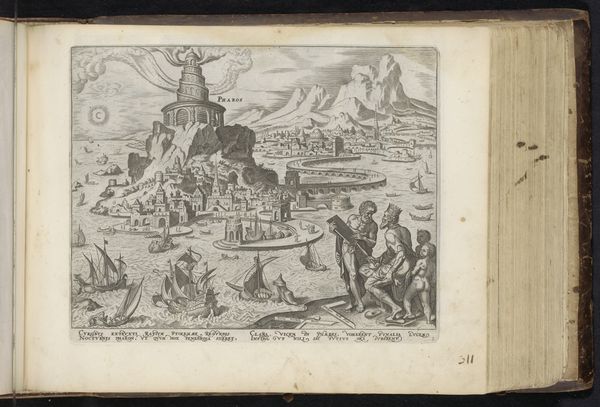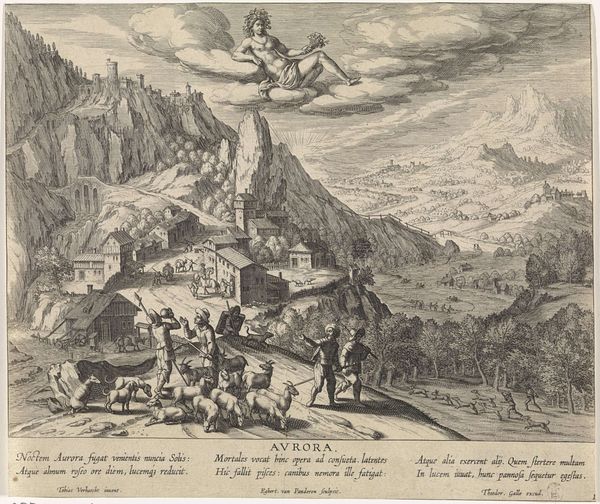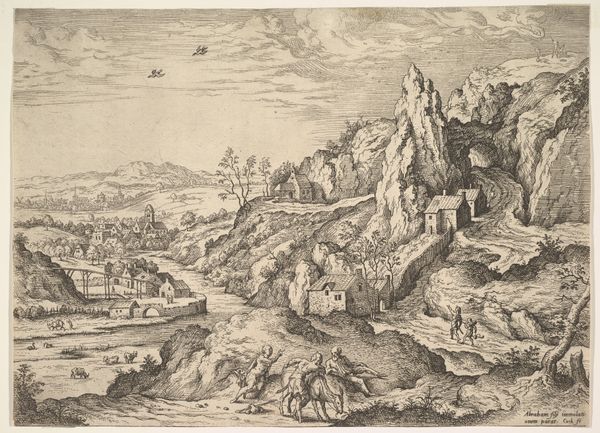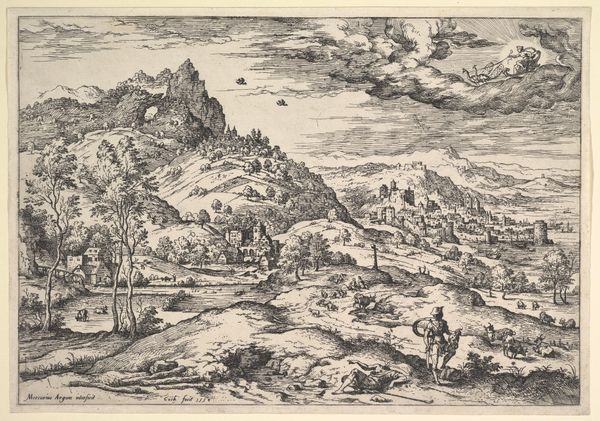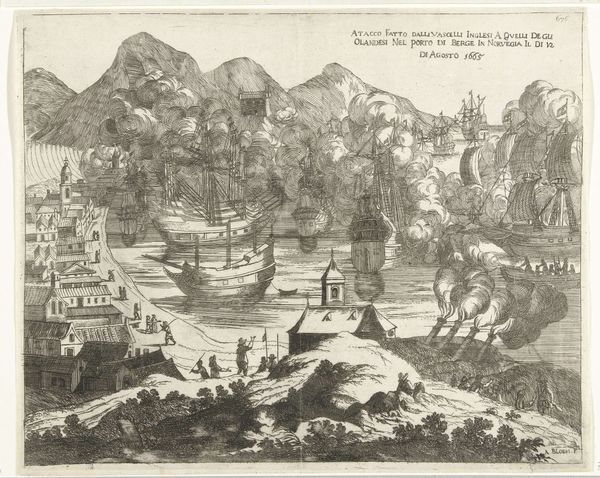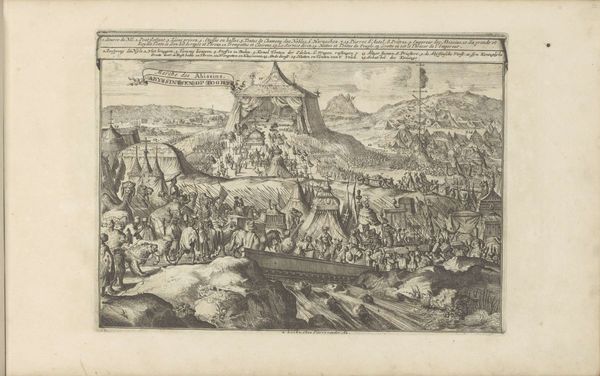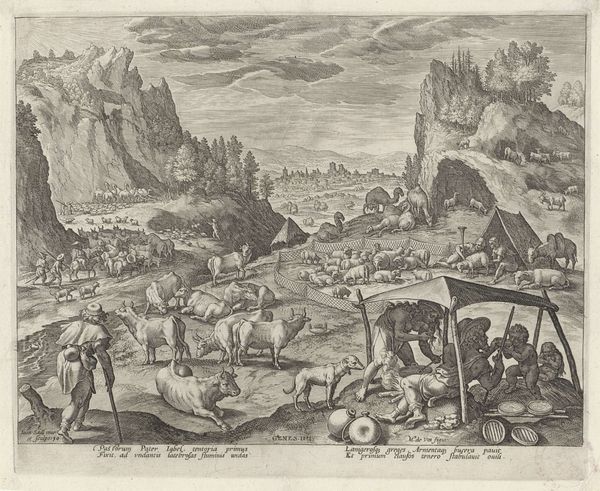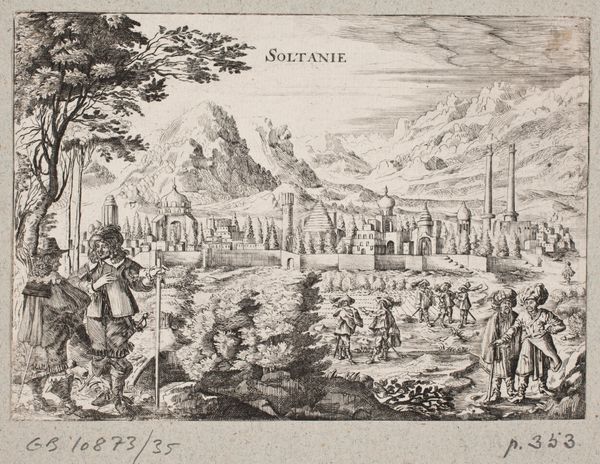
drawing, print, ink
#
drawing
#
ink drawing
# print
#
landscape
#
ink
#
ancient-mediterranean
#
cityscape
Dimensions: 230 mm (height) x 274 mm (width) (monteringsmaal), 211 mm (height) x 268 mm (width) (plademaal)
Curator: This print from 1572 is entitled "The Lighthouse at Alexandria" by Philips Galle. What strikes you first about it? Editor: The almost frantic energy! It's so busy, with incredible detail, all rendered in fine lines. The eye just darts around, trying to take it all in – the boats, the buildings, the figures in the foreground... it's a feast for the eyes, in a rather chaotic way. Curator: I'd say the context of its creation certainly influenced its style. Galle, an engraver and printmaker active in the bustling port city of Antwerp, would have witnessed firsthand the labor, trade, and increasingly globalized world. His workshop, a hub of artistic production, shaped how he, and by extension this print, understood the world. Editor: Absolutely. Let's zero in on the lighthouse itself. Notice how its form, a spiraling, almost baroque tower, dominates the cityscape. Galle's masterful handling of line creates a real sense of volume and depth. Curator: That monument’s materiality tells a great deal about resource management and status. The labor required to erect that structure—to quarry, transport, and assemble the stone, speaks to an extraordinary feat of engineering. It underscores the relationship between the lighthouse and those in power, how control over resources allows one to create a monument that both aids and dominates its surrounding. Editor: I agree, there is this real interplay between function and grandeur. Thinking formally, though, notice the way the swirling clouds echo the form of the lighthouse, unifying the composition? The strategic placement of the Pharos atop the rocky island establishes a focal point. Curator: But it's not just an aesthetic exercise, it shows power! That lighthouse represents safety and control over maritime trade, vital arteries of 16th-century commerce. Prints like this one had a market value; it speaks volumes about that economic relationship with classical antiquity. Editor: It all boils down to visual language. That Philips Galle presents this structure—as imposing as it seems from our perspective—speaks volumes about this object’s cultural relevance. Thanks to him, and others like him, we get to experience the world through this unique looking glass. Curator: Exactly! This print prompts us to consider both the enduring legacy of ancient marvels and their intersection with labor, the economy, and trade—the conditions and the cost of how we choose to define civilizations through symbols of material prowess. Editor: Yes. The Lighthouse, beyond the visual drama and historical value, pushes us to contemplate humanity’s capacity for ambition. It makes you wonder: what will the symbols of *our* ingenuity look like centuries from now?
Comments
No comments
Be the first to comment and join the conversation on the ultimate creative platform.
